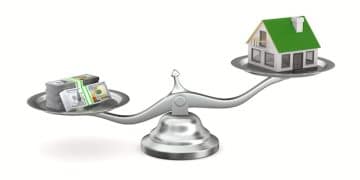Maximize Your 2025 HSA for Triple Tax Savings: A Comprehensive Guide

Maximizing your 2025 Health Savings Account (HSA) contributions offers a unique opportunity for triple tax savings, allowing you to save on healthcare expenses while reducing your current and future tax liabilities.
Planning for healthcare expenses can be a significant concern, but a Health Savings Account (HSA) offers a powerful tool for managing these costs while also providing substantial tax advantages. Understanding how to maximize your 2025 HSA contributions for triple tax savings can help you secure your financial future and healthcare needs.
Understanding Health Savings Accounts (HSAs)
A Health Savings Account, often referred to as an HSA, is a tax-advantaged savings account that can be used to pay for qualified healthcare expenses. These accounts are available to individuals who are enrolled in a high-deductible health plan (HDHP). Understanding the basics of HSAs—including eligibility requirements, contribution limits, and how they differ from other savings accounts—is crucial before diving into how to maximize their benefits.
Eligibility for an HSA
To be eligible for an HSA, you must meet specific criteria set by the IRS. Primarily, you need to be enrolled in a qualifying high-deductible health plan. Additionally, you cannot be covered by any other health insurance plan that is not an HDHP, and you cannot be enrolled in Medicare. Being claimed as a dependent on someone else’s tax return also disqualifies you from opening an HSA.
Contribution Limits for 2025
Each year, the IRS sets contribution limits for HSAs. For 2025, these limits are subject to change, but it’s essential to stay informed to ensure you’re maximizing your savings potential without exceeding the allowable amount. Typically, there are different limits for individuals and families, along with a catch-up contribution for those aged 55 and older.
- Stay updated on the official IRS announcements regarding 2025 HSA contribution limits.
- Understand the catch-up contribution limit if you are age 55 or older.
- Plan your contributions early to take full advantage of the annual limit.
In summary, grasping the fundamentals of HSAs, including eligibility criteria and annual contribution limits, is vital before developing a strategy to boost your savings and reap the benefits of these powerful accounts.
The Triple Tax Advantage of HSAs
One of the most appealing aspects of an HSA is its triple tax advantage. This unique feature allows for tax-free contributions, tax-free growth, and tax-free withdrawals for qualified medical expenses. This combination makes HSAs an incredibly efficient tool for saving and paying for healthcare.
Tax-Deductible Contributions
Contributions made to an HSA are tax-deductible, similar to traditional IRA contributions. This means that the amount you contribute can be deducted from your gross income, reducing your taxable income for the year. This immediate tax benefit can provide significant savings, especially for those in higher tax brackets.
Tax-Free Growth
The money in your HSA can grow tax-free. This growth can occur through interest, dividends, or capital gains, depending on how your HSA funds are invested. Unlike taxable investment accounts, you won’t owe taxes on any earnings as long as the funds remain in the HSA.

Tax-Free Withdrawals
Withdrawals from your HSA are tax-free as long as the funds are used for qualified medical expenses. This includes doctor’s visits, prescription drugs, and other healthcare costs. The IRS provides a comprehensive list of eligible expenses, which can help you plan and track your healthcare spending.
In conclusion, the triple tax advantage of HSAs—tax-deductible contributions, tax-free growth, and tax-free withdrawals—positions them as an incredibly powerful tool for healthcare savings and financial planning. Properly leveraging these advantages can significantly reduce your tax burden and enhance your long-term financial health.
Strategies to Maximize Your HSA Contributions in 2025
Maximizing your HSA contributions is not just about hitting the annual limit; it’s about strategically planning and optimizing your contributions to suit your financial situation. Several strategies can help you make the most of your HSA, including front-loading contributions, utilizing employer contributions, and taking advantage of catch-up contributions if you’re eligible.
Front-Loading Contributions
Front-loading involves contributing a large portion of your HSA funds at the beginning of the year. This maximizes the amount of time your contributions have to grow tax-free. While this requires having the funds available upfront, the long-term growth potential can be substantial.
Employer Contributions
Some employers offer contributions to their employees’ HSAs as part of their benefits package. If your employer offers this benefit, take full advantage of it. Employer contributions count towards your annual contribution limit, but they are essentially free money that can boost your savings significantly.
Catch-Up Contributions
If you are age 55 or older, you are eligible to make catch-up contributions to your HSA. These additional contributions allow you to save even more for healthcare expenses as you approach retirement. Catch-up contributions can significantly increase your HSA balance over time.
- Calculate potential growth by front-loading contributions early in the year.
- Fully utilize any employer matching or contributions.
- If age 55 or older, maximize catch-up contributions for enhanced savings.
In summary, by employing strategies such as front-loading, maximizing employer contributions, and taking advantage of catch-up contributions, you can substantially increase your HSA savings and optimize the benefits of this valuable financial tool.
Investing Your HSA Funds for Long-Term Growth
One of the lesser-known yet highly effective aspects of an HSA is its ability to be used as an investment vehicle. Investing your HSA funds allows them to grow tax-free over time, potentially providing a substantial nest egg for future healthcare expenses or even retirement. Understanding how to invest your HSA funds and choosing the right investment options is essential.
Choosing the Right Investments
Many HSAs offer investment options similar to those found in 401(k)s or IRAs, such as stocks, bonds, and mutual funds. The best investment choices depend on your risk tolerance, time horizon, and financial goals. Younger individuals with a longer time horizon may opt for more aggressive investments like stocks, while those closer to retirement might prefer more conservative options like bonds.
Balancing Risk and Return
When investing your HSA funds, it’s crucial to balance risk and return. Higher-risk investments have the potential for higher returns, but they also come with the risk of greater losses. Diversifying your investments across different asset classes can help mitigate risk while still allowing for growth.

Long-Term vs. Short-Term Strategies
Consider whether you are investing for long-term growth or short-term healthcare expenses. If you plan to use the funds for immediate medical needs, keeping them in a low-risk, liquid account may be best. For long-term growth, investing in a diversified portfolio of stocks and bonds can provide better returns.
In summary, investing your HSA funds can transform your account from a simple savings vehicle into a powerful tool for long-term financial growth. Thoughtful selection of investments, balancing risk and return, and aligning your strategy with your financial goals are essential to maximizing the benefits of this approach.
Common Mistakes to Avoid with Your HSA
While HSAs offer numerous benefits, it’s easy to make mistakes that can negate some of their advantages or even result in penalties. Common errors include using HSA funds for non-qualified expenses, exceeding contribution limits, and not understanding the rules for HSA inheritance. Being aware of these pitfalls can help you avoid costly mistakes.
Using Funds for Non-Qualified Expenses
One of the most common mistakes is using HSA funds for expenses that do not qualify as medical expenses under IRS rules. Doing so results in the withdrawal being subject to income tax and potentially a penalty. Familiarize yourself with the IRS’s list of qualified medical expenses to ensure you are using HSA funds appropriately.
Exceeding Contribution Limits
Exceeding the annual contribution limit for your HSA can lead to penalties and additional taxes. Keep track of your contributions throughout the year, including any employer contributions, to ensure you stay within the allowable limit. If you accidentally over-contribute, take steps to correct the error as soon as possible.
Not Understanding HSA Inheritance Rules
The rules for inheriting an HSA depend on who inherits the account. If your spouse inherits your HSA, it is treated as their own, and they can continue to use it for qualified medical expenses. If a non-spouse inherits the account, it is generally subject to income tax.
Here are a few tips to avoid common mistakes:
- Avoid using HSA funds for non-qualified expenses to prevent taxes and penalties.
- Monitor contributions throughout the year to stay within annual limits.
- Familiarize yourself with the rules for HSA inheritance depending on the beneficiary.
In summary, being aware of common mistakes associated with HSAs—such as using funds for non-qualified expenses, exceeding contribution limits, and misunderstanding inheritance rules—is crucial for maximizing the benefits of your HSA and avoiding unnecessary penalties.
Integrating Your HSA with Your Overall Financial Plan
An HSA is not just a standalone savings account; it can be strategically integrated into your overall financial plan to enhance your financial health and security. Coordinating your HSA with your retirement savings, emergency fund, and other financial goals can create a comprehensive and efficient financial strategy.
Coordinating with Retirement Savings
An HSA can serve as a supplemental retirement savings vehicle. Since HSA funds can be used for healthcare expenses in retirement, maximizing your HSA contributions can help cover these costs and reduce the strain on your other retirement accounts. Some financial planners even suggest using an HSA as a “stealth IRA” by paying for current healthcare expenses out-of-pocket and allowing the HSA to grow untouched for retirement.
Using the HSA as an Emergency Fund
While primarily intended for healthcare expenses, an HSA can also serve as part of your emergency fund. If an unexpected medical expense arises, you can draw upon your HSA funds to cover the cost without incurring taxes or penalties. This provides a financial safety net in case of emergencies.
Tax Planning and Optimization
HSAs can be incorporated into your overall tax planning strategy. Contributions to your HSA are tax-deductible, which can lower your taxable income. Additionally, the tax-free growth and withdrawals for qualified expenses make HSAs an incredibly tax-efficient savings tool. Consider how your HSA fits into your broader tax strategy.
In conclusion, integrating your HSA with your overall financial plan—including retirement savings, emergency fund, and tax planning—can significantly enhance your financial security and efficiency. Treating your HSA as a key component of your comprehensive financial strategy is essential to maximizing its benefits.
| Key Point | Brief Description |
|---|---|
| 💰 Triple Tax Savings | Contributions are tax-deductible, growth is tax-free, and withdrawals are tax-free for qualified expenses. |
| 📈 Investment Growth | Invest HSA funds in stocks, bonds, or mutual funds for tax-free growth over time. |
| ✅ Eligibility | Must be enrolled in a high-deductible health plan (HDHP) and meet other IRS criteria. |
| 🎯 Maximization | Front-load contributions, utilize employer contributions, and maximize catch-up contributions if eligible. |
Frequently Asked Questions (FAQ)
▼
The primary benefits include tax-deductible contributions, tax-free growth, and tax-free withdrawals for qualified medical expenses. This triple tax advantage makes it an excellent tool for saving on healthcare costs while reducing your overall tax burden.
▼
To be eligible, you must be enrolled in a qualifying high-deductible health plan (HDHP), not be covered by other non-HDHP insurance, and not be enrolled in Medicare. Also, you cannot be claimed as a dependent on someone else’s tax return.
▼
Your HSA is yours to keep, even if you change jobs or retire. The funds remain in your account, and you can continue to use them for qualified medical expenses. However, eligibility to contribute depends on your health plan being an HDHP.
▼
Yes, but withdrawals for non-qualified expenses are subject to income tax and a 20% penalty if you’re under 65. After age 65, withdrawals for non-qualified expenses are taxed as ordinary income but not penalized.
▼
Many HSAs offer options similar to those in 401(k)s, including stocks, bonds, and mutual funds. The choices depend on your risk tolerance, time horizon, and financial goals. Diversifying investments can help mitigate risk while allowing growth.
Conclusion
Maximizing your 2025 HSA contributions offers a significant opportunity to save on healthcare expenses while enjoying triple tax advantages. By understanding eligibility, contribution limits, and investment strategies, you can effectively integrate your HSA into your broader financial plan and secure your financial future.





